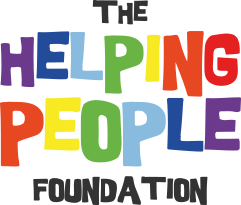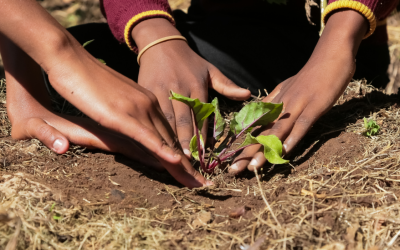CURRENT LIVING CONDITIONS IN MYANMAR
SCHOOL
The literacy rate of around 10% is rather low compared to other poor countries. However, according to the DAAD, there is a high number of children dropping out of school after primary school, as many children have to support their families in their work.
The higher education system is based on the British college system. There are now around 174 state universities and colleges in Myanmar. After 11 years of kindergarten and schooling, Myanmar students can attend a university. However, the level of education there is relatively low as a result. The higher education system is subject to strict state control.
MEDICINE
According to Aktion Deutschland Hilft, there are only 1.6 doctors per 2,000 inhabitants. Life expectancy is 70 years for women and only 64 years for men. On average, women give birth to 2 children. Around 4.5 % of them die before they reach the age of 5.
Around 240,000 people are living with HIV in Myanmar, and in 2019 around 7,700 died from the disease. The number is relatively high compared to other countries and is probably due to high drug use. Due to the low investment in the health system, the HIV infection rate is barely decreasing.
Many public hospitals have been closed since the beginning of 2021. Many people cannot afford treatment in private hospitals. Currently, hospitals are also occupied and controlled by the military. In the meantime, according to Tagesschau information, there are underground hospitals that treat the sick. Disease care and access to medicines currently cannot be guaranteed.
Water
nutrition

Geography
Myanmar is located in Southeast Asia and borders Laos, Bangladesh, India, China and Thailand. The southwest of the country is coastline of the Andaman Sea. The city of Naypyidaw has been the capital since 2005 and is located in the centre of the country. Until then, Yangon (Rangoon) was the seat of government and remains Myanmar's largest city to this day.
With an area of 676,000 square kilometres, the country is about twice the size of Germany. 54 million people live there.The mountain ranges to the north merge into the Himalayas in the eastern part. The border with Thailand in the south is also dotted with mountain landscapes. In the south on the Malaysian Peninsula lies the Mergui Archipelago with around 800 pristine islands.
Especially in the middle of the country, on the banks of the Ayeyarwady (former name: Irrawadd), the soil is very fertile. In total, about 15% of the land area in Myanmar is cultivated, mainly with rice. 40% of the country is primary forest, but its stock is steadily declining due to the clearing of precious woods and exports.Myanmar's climate goes through three phases: a cool and dry winter from November to February, followed by a hot summer from March to May and then the monsoon season until October.

History
In 1885, the British captured the Burmese Empire founded by King Anawrahta and exiled the king to India. During colonial times, Myanmar was known as Burma and was part of British India. With the Government of Burma Act in 1935, Burma received its own legislative body and was no longer part of the province of India. In the meantime, Japan occupied the country in 1941, but the British regained it at the end of the war.
Burma gained independence in 1948, but was subsequently ravaged by civil wars. Colonial history had produced a partition of Burma into two areas: The Hill Areas, which were indirectly administered and linked many different languages and ethnic groups, and the Burma Proper as directly administered areas. The hastily set up state formation fostered conflicts and disagreements between these parts of the country.
Between 1962 and 2010, Burma/Myanmar was run by various military regimes that gradually isolated the country internationally and seized more and more power. At the same time, Buddhism became strongly embedded in society and the state. The military state took violent action against other religions. In October 1965, all economic enterprises were nationalised by law.
During 1988, there were months of unrest against the military's economic policies. Many of these protests were violently put down. Thousands of people, mainly students and monks, died in the peaceful so-called "8888 Uprising". The then head of government Saw Maung renamed the country Myanmar in 1989. This is not recognised by some international governments.
Since 2008, the state has been divided into seven regions in Burma's heartland and seven ethnic sub-states. These minority areas are increasingly suffering from the activities of armed groups and para-state structures. So-called war economies, for example with regard to mineral resources, timber deposits and drug trafficking, promote conflict over land and resources.
In May 2008, a tropical storm hit Myanmar, killing between 63,000 and 101,000 people, according to UN estimates. With one million people homeless, the military regime refused to accept foreign aid. Despite the natural disaster, the constitutional referendum was held a week after the storm, with the population reportedly welcoming the new constitution with more than 90 per cent approval.
The first elections followed in 2010, but were not considered free or fair by independent observers. The winner was the military-created Union Solidarity and Development Party (USDP). In February 2011, Thein Sein was appointed Myanmar's first president. The group behind politician Aung San Suu Kyi won 43 of the 45 opposition seats. She later received the Nobel Peace Prize for her work for a non-violent democratisation of Myanmar, for which she had been under house arrest from 1995 to 2010.

Economics
The military coup is also reflected in the gross domestic product. While growth in 2020 was still 3.2% compared to the previous year, a decline of -18% is expected for 2021.
The main labour sector is agriculture, which produces about 43% of GDP, followed by the service sector with 37% and industry 20%. The unemployment rate is 4%. Around 50% of government spending goes to the military, police and intelligence agencies.
Myanmar is rich in resources such as natural gas, petroleum, painite, precious stones (such as jade and rubies) and timber. However, much of this is smuggled across the borders and therefore has no impact on the economy.Differences in the regions of the country/between the ethnic groupsMyanmar is a multi-ethnic state, home to 53 million people from around 135 different ethnic groups. The largest group is the Burmese, with around 70%.
More than 85% of the people are Buddhists. The importance of this religion is enshrined in the national constitution. Christianity accounts for about 6%, Islam for 4%.

POLITICAL STABILITY CHALLENGE
In democratic elections in 1990, the opposition National League for Democracy won, but the military regime declared the elections invalid.
It was only in 2003 that the military promised gradual democratic measures under the name of the so-called "Road Map". However, no specific date has been set for either a draft constitution or free parliamentary elections.
In August 2007, the government removed all subsidies on fuel, causing the price of petrol, diesel and gas to rise by 500 per cent. The protests that followed were violently put down. The number of demonstrators killed is estimated at between ten and several thousand.Suu Kyi's party took over the government after the first true democratic elections in 2016, but was unable to prevent the military's violent crackdown in Rakhine State. This fuelled speculation that Suu Kyi was cooperating with the military and created resentment among the population.
Suu Kyi's party won again in the parliamentary elections in November 2020. However, according to the constitution, a quarter of the seats in the parliamentary chambers were reserved for the military, who spoke of electoral fraud. According to the EU, the elections were free and fair. This was followed by a military coup on 1 February 2021 in which Suu Kyi, President Win Myint and other members of the leading party were arrested. Suu Kyi was charged with corruption in June 2021 and in December was sentenced to two years in prison. Human rights organisations call the trial a show trial.
Many protests against the military regime and for a return to democracy are still taking place today. The violent ending of the uprisings still continues to claim lives.
Sources:
global hunger index. WORLD HUNGER INDEX 2020: MYANMAR; URL: https://www.globalhungerindex.org/pdf/de/2020/Myanmar.pdf (last accessed 29.01.2022)
Malteser International. Order of Malta Worldwide Relief; URL: https://www.malteser-international.org/de/hilfe-weltweit/asien/together-lokalisierungsprogramm.html (last accessed 29.01.2022)
statista. Myanmar: Total Population from 1998 to 2015 and Projections to 2026 (in millions of inhabitants) URL: https://de.statista.com/statistik/daten/studie/328878/umfrage/gesamtbevoelkerung-von-myanmar/ (as at: 21.01.2022)




